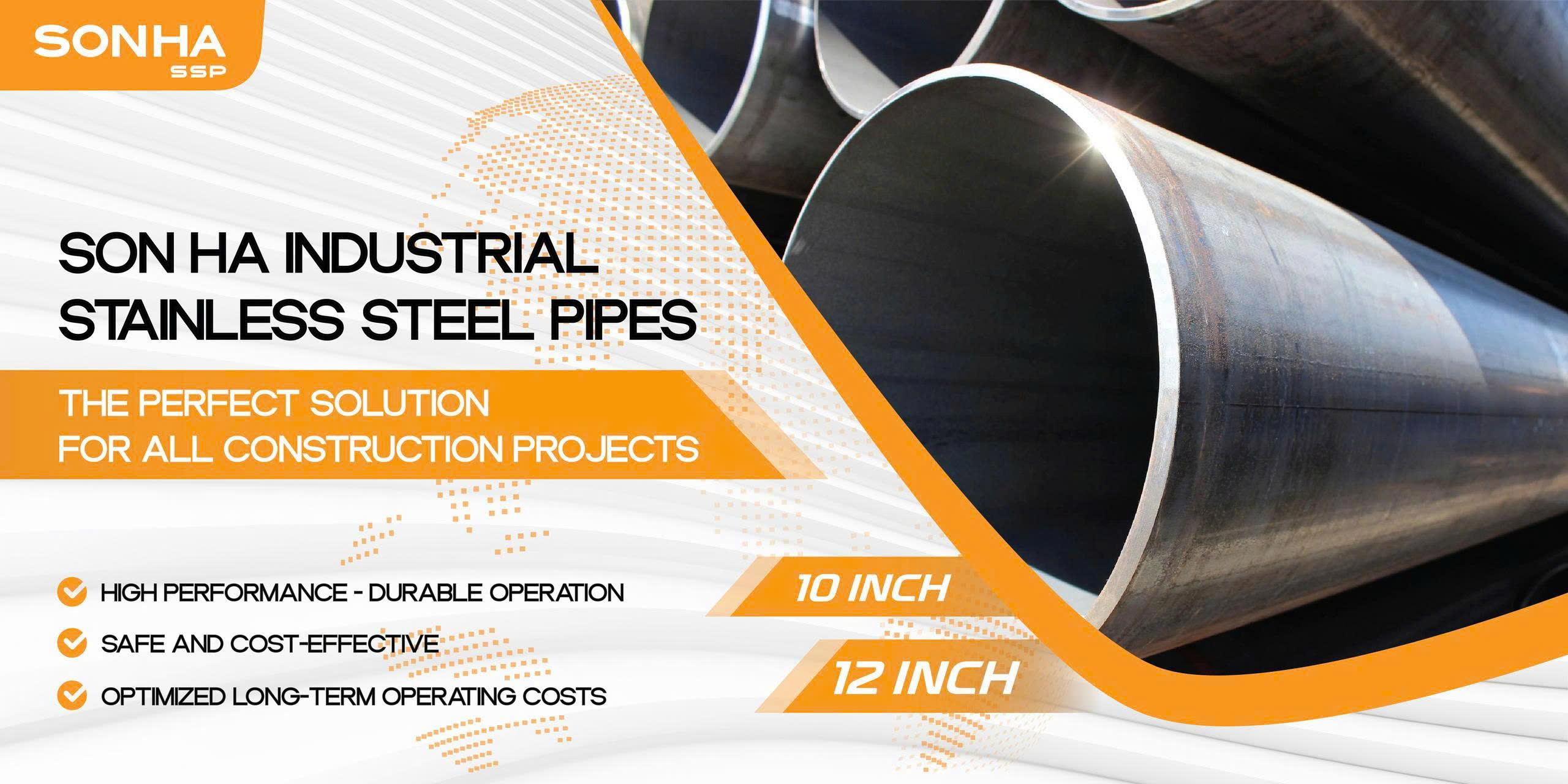Exploring the Hot-Rolled Steel Production Process
In the construction and industrial materials sector, hot-rolled steel (HRC) is a fundamental and widely used type of steel. To create hot-rolled steel, the raw material must undergo a complex process that includes many stages, from preparing the raw materials to finishing the product. In the article below, Son Ha SSP will provide a detailed look at the hot-rolled steel production process, as well as its applications and how to store it.
1. What is Hot-Rolled Steel?
Hot-rolled steel is a type of steel that is processed at a high temperature (over 1000°C) and then rolled into a coil. At this temperature, the steel becomes durable, malleable, and easy to shape. The rolling process is carried out while the steel billet is still at a high temperature, helping to transform it into products like large steel coils or plates. Hot-rolled steel products typically have a rough surface with a characteristic dark blue color and little shine.
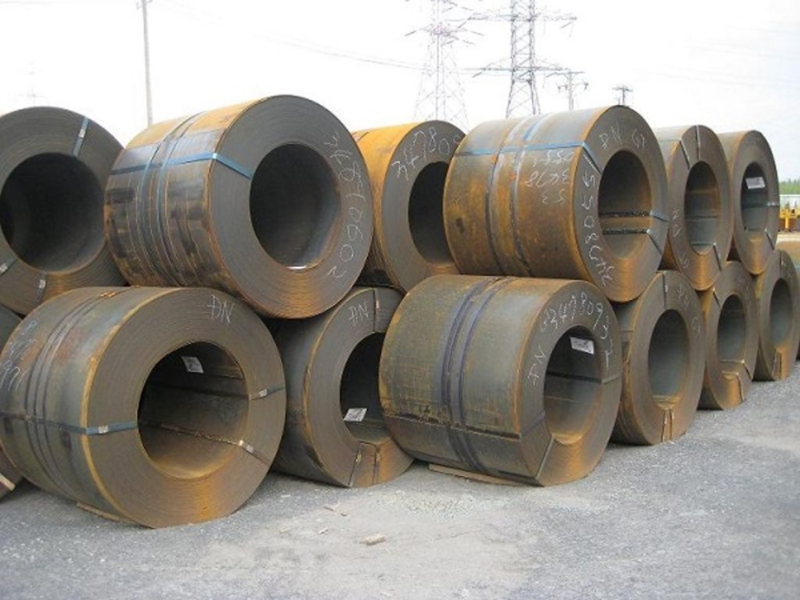
Hot rolled coil has a characteristic rough surface
Hot-Rolled Steel Coils have several outstanding characteristics:
- High Load-Bearing Capacity: Produced at high temperatures, hot-rolled steel coils have good tensile strength and can withstand heavy loads, meeting the demands of load-bearing structures.
- Easy to Process: Due to its malleability at room temperature, this type of steel is easy to cut, bend, weld, or shape as needed, making it suitable for a wide range of designs.
- Affordable Price: Compared to cold-rolled or high-grade alloy steels, hot-rolled steel has a lower production cost, which helps optimize the budget for large-scale projects.
2. Hot-Rolled Steel Production Process
The hot-rolled steel production process consists of several main stages: raw material preparation, continuous casting, hot rolling, and surface treatment. Each stage plays a specific role in transforming steel from its raw form into the final product. Let’s explore the steps in detail below:
-
Stage 1: Raw Material Preparation
First, the main raw materials, which include iron ore (pellets, sintered ore) and additives (coke, limestone, etc.), are fed into a blast furnace to create molten iron. The process may also include adding steel scrap, which is heated to dissolve into the molten metal.
-
Stage 2: Heating
After being melted, the material is transferred to a Basic Oxygen Furnace or an Electric Arc Furnace. Here, the molten metal is heated to a high temperature, and impurities are removed. At the same time, the chemical composition is adjusted to produce raw steel that meets the required specifications. During this heating step, oxygen is often blown into the furnace or an arc is created to reduce the carbon content and remove impurities, ensuring the final product has the desired steel grade.
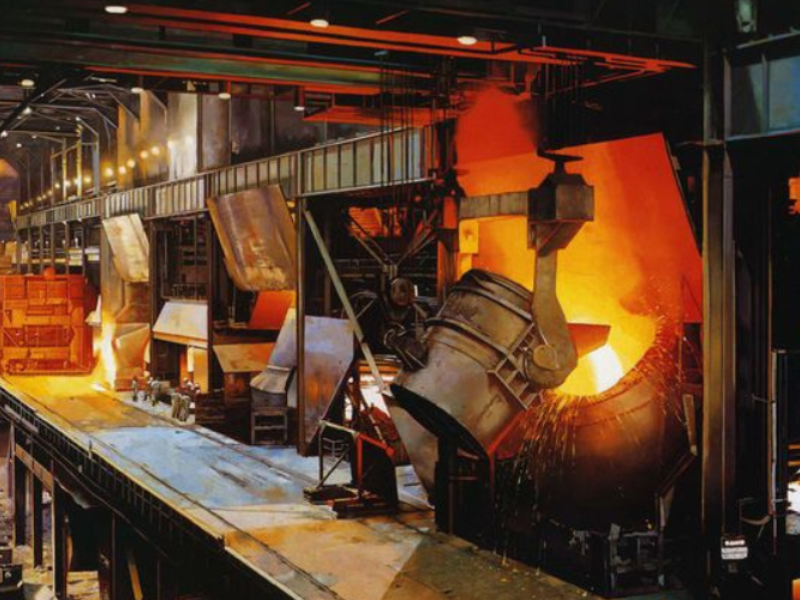
Heating is an indispensable step in the hot rolled steel production process.
-
Stage 3: Continuous Casting
After reaching the standard composition and temperature, the molten steel is transferred to a continuous casting machine to create semi-finished billets. There are three main types of billets produced:
- Bloom billets: A square-shaped billet, with a cross-section typically measuring 100×100, 125×125, or 150x150mm and a length of about 6–12m.
- Slab billets: A flat, rectangular block used for rolling into hot-rolled coils (HRC), cold-rolled coils (CRC), and various industrial steel sections and plates.
- Beam blanks: A composite type of billet that can replace the two types above.
After casting, these steel billets are kept at a high temperature in preparation for the next stage of hot rolling.
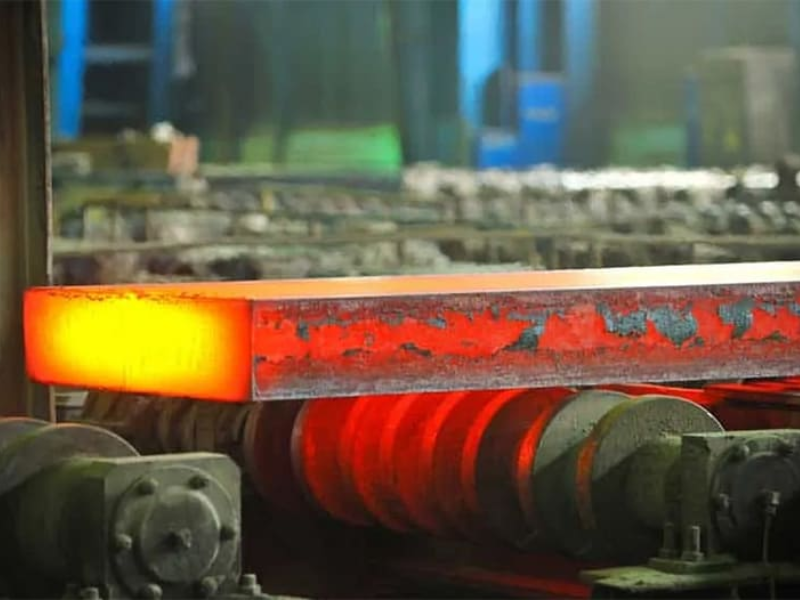
Continuous casting to produce semi-finished products
Stage 4: Hot Rolling
The steel billets are reheated to a temperature of about 1100–1200°C before entering the hot rolling mills. The reheated billets are then passed through a series of rollers to gradually reduce their thickness, forming the final steel products.
The type of rolling mill used depends on the initial billet. For instance, bloom billets are rolled in section mills to produce steel rails, sheet piles, H-beams, I-beams, and construction bars. Bar billets are sent to wire rod mills to create smooth steel coils. Slab billets are taken to plate mills to produce industrial steel plates.
Stage 5: Post-Hot Rolling Surface Treatment
After the hot rolling process, the steel’s surface is typically covered with a thin layer of scale due to high-temperature oxidation. To improve the surface finish, the hot-rolled steel coils are pickled with an acid solution to completely remove the scale and oxides. Immediately after, the steel surface is coated with a thin layer of protective oil to prevent corrosion during storage. The final product at this stage is a pickled and oiled hot-rolled steel coil, ready for use or for further cold rolling if needed.
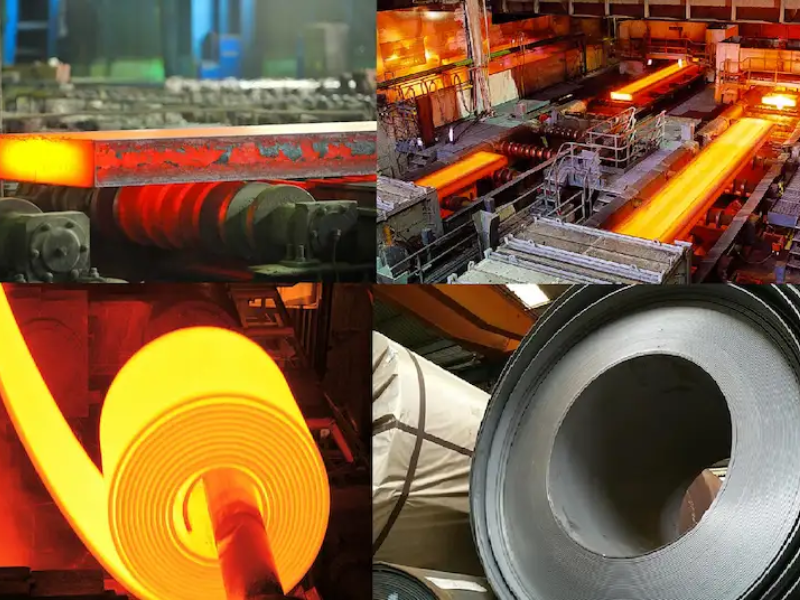
All stages in the hot rolled steel production process
3. Applications of Hot-Rolled Steel
Thanks to its high durability, good load-bearing capacity, and flexibility in manufacturing, hot-rolled steel coils are increasingly popular and widely used in many industrial fields, especially construction and mechanical engineering.
In Industrial and Civil Construction
Hot-rolled steel coils are the preferred choice for large, load-bearing structures due to their rigidity and stability:
- Main Structural Components: They are used to manufacture columns, beams, and roof trusses for workshops, high-rise buildings, overpasses, and industrial warehouses. Their high mechanical strength helps these structures maintain stability and safety over time.
- Prefabricated Steel Frames: Hot-rolled steel is an ideal material for fabricating fast and precise structural frames, which shortens construction time and optimizes costs.
- Auxiliary Components: Details such as railings, fences, and gates for construction sites are also often made from hot-rolled steel coils because they are easy to shape and highly resistant to impact.
In Mechanical Engineering and Manufacturing
Beyond the construction sector, hot-rolled steel coils are also a foundation for many applications in mechanical engineering:
- Industrial Equipment: From machine parts and mechanical components to manufacturing parts, hot-rolled steel meets strict requirements for durability and operational performance.
- Automotive Industry: Chassis, floors, and car bodies—all details that demand high load-bearing capacity and resistance to deformation—can be produced from hot-rolled steel coils.
- Household Appliances: Many metal furniture products, such as tables, chairs, shelves, and racks for homes and offices, also take advantage of this type of steel’s ease of processing and reasonable cost.
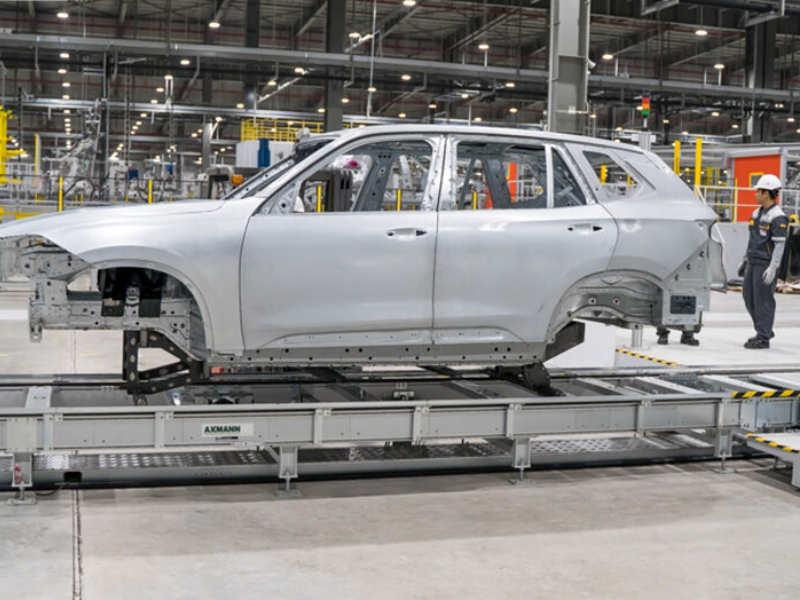
Applications of hot rolled steel
In Heavy Industry and Mining
Hot-rolled steel plays a pivotal role in manufacturing large-scale equipment:
- Construction Machinery: Machines like excavators, bulldozers, and heavy-duty trucks all use components made from hot-rolled steel to ensure stability under harsh working conditions.
- Mining Equipment: Thanks to its resistance to abrasion and impact, hot-rolled steel coils are widely used in drilling machines, conveyor belts, and mining dump trucks, contributing to the enhanced performance and durability of the equipment.
As you can see, the hot-rolled steel production process is a rigorous sequence of stages that requires modern technology and strict control at every step. It is this process that gives hot-rolled steel products their superior mechanical durability, flexible workability, and high stability, allowing them to meet the demanding requirements of heavy industry and modern construction.
Related Posts:
Next latest post

Where Is Stainless Steel 304 Pipe Used?

Which Type of Stainless Steel Pipe Is the Best? A Guide to Choosing the Right One for Your Application

A Detailed Overview of the Characteristics and Applications of Welded Stainless Steel Pipes
